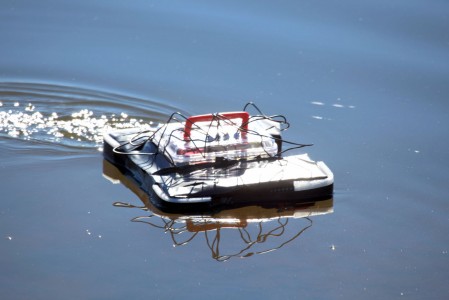Many people have asked me for a cost breakdown of my Wifi Radio project. Well, here it is!
I added a link to possible sources for as many parts as I could. However, there were a few things I scrounged from local surplus electronics stores and couldn’t easily find a good equivalent online. I’m not expecting everyone to copy my design exactly (not everyone has a woodworking shop at their disposal), so use these numbers as a rough estimate only.
If you shop around you should be able to beat the listed prices on many items, so I see this as sort of a worst case scenario.
To flash the wireless router and create a minimal radio (with no user interface), you will need:
Total: $65.48
To make the LCD display and tuner interface, you’ll also need:
Total: $52.06
(This is on the high end, the interface can certainly be built for less by using scrounged/surplus components.)
To make the finished radio, add:
- Volume and tune knobs – ~$2 @ HSC
- Cool tuner knob – $8.55
- 5V/12V power supply brick – $10 @ Weird Stuff
- 5-pin mini-DIN power connector – ~$3 @ HSC
- Power switch – ~$1 @ HSC
- Cheap set of PC speakers (gutted for the speakers and amplifier) – $5 @ Weird Stuff
Total: $29.55
Oh yeah, and I almost forgot…
- An awesome friend named Tony with a full woodworking shop in his garage who will make you a killer wooden enclosure for free – $priceless
Grand total (excluding the box) – $147.09
If you take out the cost of the development tools, namely the FTDI cable and the USBtinyISP, the total comes out to $105 (without the box).
By scrounging materials and using parts from your junkbox you should be able to reduce that figure even more, but obviously the grand total hinges on what kind of enclosure you use. Not everyone has a friend with serious woodworking skills willing to donate time and materials, but use this as an excuse to get creative.
I wanted a box that showcased the time and effort that I spent on the electronics inside, but that doesn’t mean an old boombox from the Salvation Army couldn’t work just as well.
When I first started this project, my goal was to keep the total parts cost under $100. On paper, it looks like I came pretty close to that, thanks to the donated box and excluding the reusable development tools like the FTDI cable and AVR programmer. To be honest, I probably spent twice that amount on spare power supplies, extra knobs, a second router to bring to NOTACON, and a bunch of other stuff that I didn’t end up using in the final project. But I’m pretty ok with that. I think this just highlights the fact that:
If you just want a Wifi Radio, it will always be cheaper to buy one off the shelf. But if you make your own, it will be infinitely more rewarding.
But if you make your own, it will be infinitely more rewarding.
It certainly has been for me. 🙂



